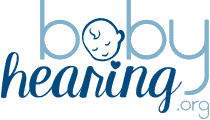Communication Disorders in Children
Many young children have problems with speech, language or other communication skills at some point in their life. While many children catch up, some continue to have difficulty. Speech-language pathology services should be considered if difficulty continues.
Below are different disorders related to communication.
Language Disorder
A child with a language disorder may have difficulty following directions, understanding language, choosing appropriate words and combining them correctly in sentences. Language disorders can hinder a child’s ability to learn and interact with others. Some signs of a language disorder may include:
- Poor eye contact
- Lack of gestures
- Difficulty following simple directions
- No words, or limited vocabulary
- Echoes words or phrases
- Many grammar errors when producing language in sentences
- Lack of ability to retell stories or past events
- Difficulty with learning, reading or attention in a classroom setting
Articulation Disorder
A child with articulation disorder, or speech sound disorder, may have difficulty pronouncing individual sounds. The child may substitute easier sounds for harder ones, distort sounds or omit sounds. Examples of these are “tun” for sun, “shlun” for sun, “hou” for house and “ool” or school. Some signs of an articulation disorder can include:
- Limited or no babbling or jargon as an infant or toddler
- Leaving out consonants or unclear speech
- Distorted speech that is hard to understand
- No production of some speech sounds
Fluency Disorder
A child with fluency disorder, also known as stuttering, may have frequent disruptions in their flow of speech. Some signs of a fluency disorder can include:
- Hesitations, involuntary repetitions, blocks or disruptions during speech
- Tension during speech, or movements such as forceful eye blinking or jerking
Voice Disorder
A child with voice disorder may have abnormal vocal cord structure or abnormal function. Some signs of a voice disorder can include:
- A harsh, hoarse, raspy or breathy voice
- Inappropriate vocal pitch for the child’s sex or age
- Frequent pitch breaks
Resonance Disorder
A child with resonance disorder may have either velopharyngeal dysfunction, a problem with the valve that closes off the nose from the mouth during speech, or blockage in the throat, nose or back of the mouth. Some signs of a resonance disorder can include:
- Abnormal resonance due to too much sound in the nasal cavity during speech
- Abnormal resonance due to a blockage in the nasal cavity
- Abnormal resonance due to atypical mouth structures, such as cleft palate
- Abnormal sound resonance due to blockage in one or more areas of the vocal tract
Hearing and Language Websites
Boys Town has created in-depth websites to help parents, caregivers, educators and others caring for children who have been newly diagnosed as Deaf or hard-of-hearing and for individuals of all ages with speech-language concerns.


Speech and Language
Speech Therapy;Childhood Deafness
